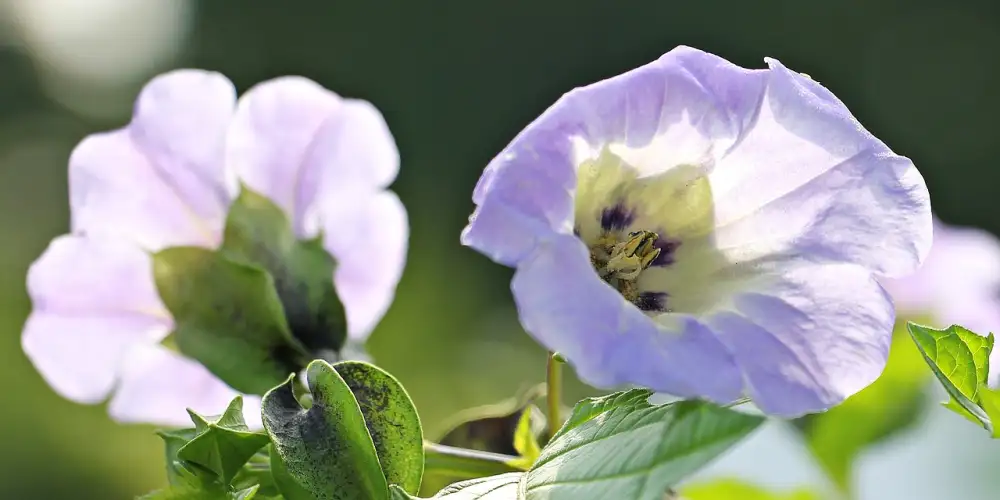Effortless Fruit Fly Trap: Bid Farewell to Pesky Insects with this Home Essential

- Brief explanation of fruit flies and their nuisance in homes
- Importance of using a fruit fly trap
- Understanding fruit flies
- Description of fruit flies and their habits
- Explanation of why fruit flies are attracted to homes
- Benefits of using a fruit fly trap
- Prevention of fruit fly infestations
- Reduction of fruit fly population
- Maintenance of a clean and hygienic home environment
- Types of fruit fly traps
- DIY fruit fly traps using common household items
- Commercially available fruit fly traps and their features
- How to make a DIY fruit fly trap
- Step-by-step instructions for creating a homemade fruit fly trap
- List of necessary materials and tools
- Tips for using a fruit fly trap effectively
- Placement of the trap in strategic locations
- Proper maintenance and cleaning of the trap
- Additional measures to prevent fruit fly attraction
- Recap of the importance of using a fruit fly trap
- Encouragement for readers to take action and implement the suggested methods
Fruit flies, those tiny buzzing pests, can quickly become a nuisance in our homes. These pesky insects are attracted to ripe fruits and vegetables, making them a common sight in kitchens and pantries. However, there is a simple solution to bid farewell to these bothersome creatures - a fruit fly trap. Using a fruit fly trap not only helps eliminate the annoyance of fruit flies but also ensures a clean and hygienic home environment. In this article, we will explore the benefits of using a fruit fly trap, different types available, and provide step-by-step instructions for creating an effortless DIY trap. Say goodbye to fruit flies with this essential home tool!
Brief explanation of fruit flies and their nuisance in homes
Fruit flies, scientifically known as Drosophila melanogaster, are small insects that are commonly found in homes. They are attracted to ripened fruits and vegetables, as well as fermented products like wine and beer. These tiny pests can quickly multiply, causing a nuisance in our living spaces. Fruit flies are not only bothersome but can also contaminate food with bacteria and other pathogens they carry on their bodies. To prevent the annoyance and potential health risks associated with fruit flies, it is essential to use a fruit fly trap.
Importance of using a fruit fly trap
Fruit flies, those tiny pests that seem to appear out of nowhere, can quickly become a nuisance in our homes. These insects are attracted to ripe or decaying fruits and vegetables, as well as sugary substances like juice or soda. Once they invade our living spaces, fruit flies can be difficult to get rid of. This is where the importance of using a fruit fly trap comes in.
A fruit fly trap is an essential tool for effectively controlling and eliminating fruit fly infestations. By using a trap, we can prevent these pesky insects from multiplying and spreading throughout our homes. Fruit fly traps work by luring the flies into a container or device where they become trapped and unable to escape.
The benefits of using a fruit fly trap are numerous. Firstly, it helps prevent fruit fly infestations by capturing the adult flies before they have a chance to lay eggs on fruits or vegetables. By doing so, it breaks the reproductive cycle and prevents further population growth.
Secondly, using a fruit fly trap helps reduce the overall population of these insects in our homes. By trapping and removing adult flies, we decrease their numbers and minimize the annoyance they cause.
Lastly, a fruit fly trap contributes to maintaining a clean and hygienic home environment. Fruit flies not only contaminate food with bacteria but also carry diseases such as E.coli and Salmonella. By trapping them before they have access to our food sources, we ensure the safety and quality of what we consume.
In conclusion, using a fruit fly trap is crucial for dealing with these bothersome insects effectively. It helps prevent infestations, reduces their population, and promotes cleanliness in our homes. Don't let fruit flies take over your kitchen; invest in a reliable fruit fly trap today!
Understanding fruit flies
Fruit flies, scientifically known as Drosophila melanogaster, are small insects that are commonly found in homes. These tiny pests measure about 3 to 4 millimeters in length and have a tan or brownish body with red eyes. Fruit flies are attracted to ripe or decaying fruits and vegetables, as well as fermented liquids such as wine and vinegar. They have a short lifespan of around 8 to 10 days, during which they can reproduce rapidly.
Fruit flies are attracted to homes due to the presence of overripe fruits and vegetables. They lay their eggs on these decaying organic materials, providing a suitable environment for their larvae to develop. The warm and humid conditions inside homes further facilitate their breeding cycle. Additionally, fruit flies can enter homes through open windows or doors, making it easy for them to infest kitchens and other areas where food is stored.
Understanding the habits of fruit flies is crucial in effectively dealing with them. By knowing what attracts them to our homes, we can take necessary measures to prevent infestations and reduce their population.
Description of fruit flies and their habits
Fruit flies, scientifically known as Drosophila melanogaster, are small insects that measure about 3 to 4 millimeters in length. They have a tan or brownish-yellow body with red eyes. Fruit flies are commonly found in homes and are known for their rapid reproduction rate. These pests lay their eggs on overripe fruits and vegetables, fermenting liquids, and moist organic matter. Fruit flies have a short lifespan of about 8 to 10 days but can produce hundreds of offspring during that time. They are attracted to the sweet aroma of decaying fruits and vegetables, making them a common nuisance in kitchens and dining areas.
Explanation of why fruit flies are attracted to homes
Fruit flies are attracted to homes due to their preference for fermenting fruits and vegetables. These tiny insects have a keen sense of smell, which allows them to detect the aroma of ripening or decaying produce from a distance. They are especially drawn to overripe fruits, as they provide an ideal breeding ground for fruit fly larvae. Additionally, fruit flies are also attracted to sugary substances like spilled juices, soda, and alcohol. The warm and humid environment inside homes further enhances their attraction. Understanding why fruit flies are attracted to homes is crucial in effectively combating their presence.
Benefits of using a fruit fly trap
Using a fruit fly trap offers several benefits. Firstly, it helps prevent fruit fly infestations by capturing and eliminating these pests before they can reproduce. Secondly, it reduces the population of fruit flies in your home, leading to fewer annoying insects buzzing around. Lastly, a fruit fly trap ensures a clean and hygienic environment by trapping and disposing of the flies. By using a fruit fly trap, you can bid farewell to these pesky insects and enjoy a more pleasant living space.
Prevention of fruit fly infestations
Prevention of fruit fly infestations is crucial in maintaining a pest-free home. Fruit flies are attracted to ripe and decaying fruits, vegetables, and other organic matter. To prevent infestations, it is essential to store fruits and vegetables properly by refrigerating or sealing them in airtight containers. Regularly clean kitchen surfaces, dispose of trash promptly, and avoid leaving food scraps exposed. By implementing these preventive measures, you can significantly reduce the chances of fruit fly infestations in your home.
Reduction of fruit fly population
Using a fruit fly trap is an effective way to reduce the population of these pesky insects in your home. Fruit flies reproduce quickly, with each female laying up to 500 eggs at a time. By trapping and eliminating adult fruit flies, you can prevent them from laying more eggs and further increasing their population. This not only helps in reducing the annoyance caused by fruit flies but also prevents potential health risks associated with their presence.
Maintenance of a clean and hygienic home environment
Using a fruit fly trap not only helps in reducing the fruit fly population but also contributes to maintaining a clean and hygienic home environment. Fruit flies are known to carry bacteria and pathogens, making them potential carriers of diseases. By trapping these insects, we prevent them from contaminating our food and surfaces, thus ensuring a healthier living space for ourselves and our families.
Types of fruit fly traps
There are two main types of fruit fly traps: DIY traps and commercially available traps. DIY traps can be made using common household items, making them cost-effective and easily accessible. These traps typically involve using a container with a small opening, such as a jar or bottle, filled with a mixture of vinegar or fruit juice and dish soap. The vinegar or fruit juice attracts the fruit flies, while the dish soap breaks the surface tension of the liquid, causing the flies to drown.
On the other hand, commercially available fruit fly traps are specifically designed to attract and capture fruit flies effectively. These traps often use non-toxic baits that lure in the insects and prevent them from escaping. Some commercial traps also come with adhesive surfaces or sticky pads to trap the flies upon contact.
When choosing a commercial trap, it is important to consider features such as effectiveness, ease of use, and safety. Look for products that have been tested and proven to be effective in trapping fruit flies without harmful chemicals. Additionally, consider factors such as durability and ease of disposal when selecting a commercial trap.
Both DIY and commercially available fruit fly traps can be effective in controlling fruit fly populations in your home. The choice between the two depends on personal preference, budget, and availability.
DIY fruit fly traps using common household items
One of the easiest and most cost-effective ways to get rid of fruit flies is by making your own DIY fruit fly trap using common household items. These traps are simple to create and can be highly effective in catching and eliminating these pesky insects. All you need is a small container, such as a jar or bowl, some plastic wrap, apple cider vinegar or red wine, dish soap, and a toothpick. By combining these items, you can create a trap that will attract and trap fruit flies.
Commercially available fruit fly traps and their features
Commercially available fruit fly traps come in various forms, each with its own unique features. Some traps use attractants such as pheromones or food-based lures to entice fruit flies into the trap. These traps are designed to be easy to use and require minimal maintenance. They often come with disposable containers or sticky pads to catch and contain the trapped flies. Additionally, some commercial traps have a visually appealing design that can blend seamlessly into any home decor. With these options available, homeowners have a convenient and effective solution to combat fruit fly infestations.
How to make a DIY fruit fly trap
To make a DIY fruit fly trap, you will need the following materials: a small glass or jar, apple cider vinegar, dish soap, plastic wrap, and a rubber band. Start by pouring about half an inch of apple cider vinegar into the glass. Add a few drops of dish soap to break the surface tension. Cover the glass with plastic wrap and secure it with a rubber band. Poke several small holes in the plastic wrap. The scent of vinegar will attract the fruit flies, and when they enter through the holes, they will get trapped inside due to the soapy water. Place this trap near areas where fruit flies are commonly seen, such as near ripe fruits or trash cans.
Step-by-step instructions for creating a homemade fruit fly trap
Step 5: How to make a DIY fruit fly trap
Creating a homemade fruit fly trap is easy and cost-effective. Follow these step-by-step instructions to make your own trap:
1. Take a small glass or plastic container with a lid, such as a mason jar or a plastic bottle.
2. Remove the lid and pour about half an inch of apple cider vinegar into the container. Fruit flies are attracted to the sweet smell of vinegar.
3. Add a few drops of dish soap to the vinegar. The soap will break the surface tension, making it difficult for fruit flies to escape once they enter the trap.
4. Cut a small hole in the center of the lid, just big enough for fruit flies to enter.
5. Place the lid back on the container and secure it tightly.
6. Optional: You can enhance the attractiveness of your trap by placing some ripe or overripe fruit near it. The scent will lure fruit flies towards the trap.
7. Position your homemade fruit fly trap in areas where you've noticed high fruit fly activity, such as near garbage bins or fruit bowls.
Remember to check and empty your trap regularly, as it may fill up with captured fruit flies over time.
List of necessary materials and tools
To make a DIY fruit fly trap, you will need the following materials and tools:
1. A small glass or plastic container with a lid (such as a mason jar or a plastic bottle)
2. Apple cider vinegar or red wine
3. Dish soap
4. Plastic wrap or a rubber band
5. A sharp knife or scissors
These items are easily accessible and can be found in most households.
Tips for using a fruit fly trap effectively
To use a fruit fly trap effectively, proper placement is key. Position the trap near areas where fruit flies are commonly found, such as the kitchen or dining area. Ensure that the trap is placed away from food preparation surfaces to avoid contamination.
Regular maintenance and cleaning of the trap are essential for optimal effectiveness. Empty the trap regularly to prevent overflow and remove any captured fruit flies. Clean the trap with soap and water to eliminate any residue or attractants that may have built up.
In addition to using a fruit fly trap, take additional measures to prevent fruit fly attraction. Keep ripe fruits in the refrigerator or covered containers to minimize exposure. Clean up spills and crumbs promptly, as these can also attract fruit flies.
By following these tips and implementing a fruit fly trap, you can bid farewell to pesky insects and enjoy a clean and insect-free home environment.
Placement of the trap in strategic locations
Placement of the trap in strategic locations is crucial for its effectiveness. Fruit flies are attracted to areas with ripe fruits, vegetables, and decaying organic matter. To maximize trapping, position the trap near these sources. Place it on countertops, near garbage bins, or in the kitchen where fruit flies are commonly found. Additionally, consider placing traps in other rooms where fruits or vegetables are stored. By strategically placing the trap, you can target and capture fruit flies effectively.
Proper maintenance and cleaning of the trap
Proper maintenance and cleaning of the fruit fly trap is essential to ensure its effectiveness in eliminating these pesky insects. Regularly check the trap for any captured fruit flies and dispose of them properly. Emptying the trap frequently prevents the buildup of dead flies, which can attract more flies.
Cleaning the trap is also crucial to maintain its efficiency. Rinse it with warm soapy water to remove any residue or debris. This will prevent any lingering odors that may attract fruit flies. Make sure to thoroughly dry the trap before reusing it.
Additionally, consider replacing the bait in the trap regularly, as it can lose its potency over time. Fresh bait will continue to attract fruit flies and increase the trap's effectiveness.
By following these maintenance and cleaning practices, you can ensure that your fruit fly trap remains a powerful tool in keeping your home free from these annoying insects.
Additional measures to prevent fruit fly attraction
To further prevent fruit fly attraction, it is essential to implement additional measures in your home. Firstly, make sure to store fruits and vegetables properly by keeping them in sealed containers or refrigerating them. This will minimize the release of ethylene gas, which attracts fruit flies. Additionally, regularly clean your kitchen and dispose of any overripe or rotting produce promptly. Fruit flies are also attracted to sugary substances, so wipe up spills and keep countertops clean. Lastly, ensure that your garbage cans have tight-fitting lids to prevent fruit flies from accessing food waste. By following these preventive measures along with using a fruit fly trap, you can bid farewell to these pesky insects effortlessly.
In conclusion, fruit flies can be a pesky nuisance in our homes, but with the use of a fruit fly trap, we can bid farewell to these annoying insects. By understanding the habits and attraction of fruit flies, we can effectively prevent infestations and reduce their population. Using a fruit fly trap not only helps maintain a clean and hygienic home environment but also ensures the safety of our food. Whether it's a DIY trap or a commercially available one, taking action to get rid of fruit flies is essential. So, let's say goodbye to these bothersome insects and enjoy our culinary delights in peace!
Recap of the importance of using a fruit fly trap
In conclusion, using a fruit fly trap is essential for maintaining a pest-free and hygienic home environment. Fruit flies can be a nuisance, but with the right trap, you can prevent infestations and reduce their population. By implementing a DIY or commercially available fruit fly trap, you can bid farewell to these pesky insects effortlessly. Remember to place the traps strategically, clean and maintain them regularly, and take additional measures to prevent fruit fly attraction. Don't let fruit flies ruin your culinary delights - take action and say goodbye to these tiny pests today!
Encouragement for readers to take action and implement the suggested methods
Now that you have learned about the nuisance of fruit flies and the benefits of using a fruit fly trap, it's time to take action. Don't let these pesky insects invade your home any longer. By implementing the simple and effective methods discussed in this article, you can bid farewell to fruit flies once and for all.
Whether you choose to create a DIY fruit fly trap using common household items or opt for a commercially available one, the key is consistency. Place the traps strategically in areas where fruit flies are commonly found, such as near ripe fruits or garbage bins. Regularly clean and maintain the traps to ensure their effectiveness.
Remember, prevention is better than cure. Keep your kitchen clean, dispose of overripe fruits promptly, and seal any potential entry points for fruit flies. By following these guidelines and utilizing a fruit fly trap, you can maintain a clean and hygienic home environment free from these annoying insects.
So why wait? Take action now and say goodbye to fruit flies. Your efforts will be rewarded with a pest-free home where you can savor the flavors of life without any unwanted visitors.
Published: 24. 02. 2024
Category: Home



